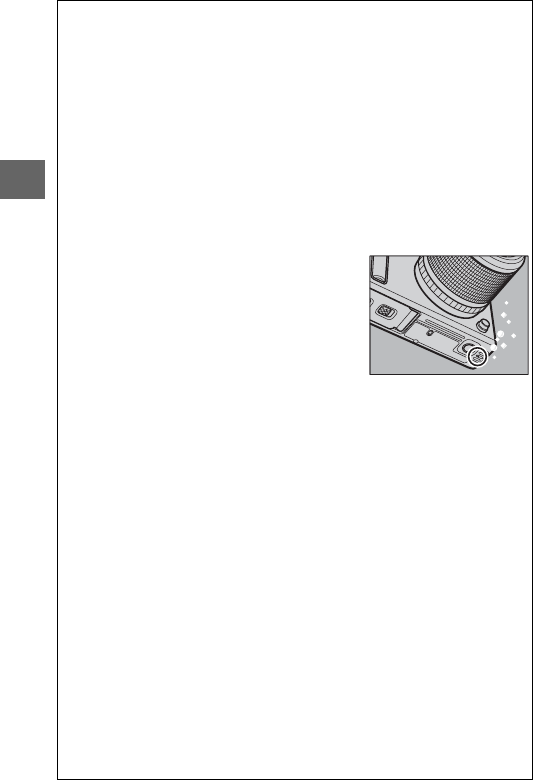
76
P
D
Maintenance
Observe the following precautions when cleaning the camera and lens
after underwater use.
• Never remove the lens or open the connector or battery-chamber/
memory card slot cover under water. Before exchanging lenses or
opening or closing the covers, wipe off water with a soft, dry cloth and
be sure the product is completely dry, as otherwise water from the
lens or covers may fall into the battery chamber or memory card slot
or onto the battery, memory card, watertight channel, hinges, or con-
nectors. Choose shaded locations free from spray, wind, dust, and
sand, and check for water on the inside of the covers before closing
them. Water on the inside of the covers could result in condensation
or other damage.
• Air may escape from the pressure-equaliza-
tion vent or microphone and speaker cov-
ers when the camera is immersed. This is
normal and does not indicate a malfunc-
tion. Note that water in the holes of the
microphone and speaker covers may inter-
fere with sound quality; dry the covers with
a soft, dry cloth, but do not insert sharp objects into the holes, as this
could damage the camera or make it vulnerable to leaks.
• Do not dry the camera or lens by leaving it in direct sunlight or dry
using hair dryers or other powered devices. Failure to observe this
precaution could damage the camera, lens, or O-ring, resulting in
leaks.
• Benzene, thinner, alcohol, soap, neutral detergents, and other clean-
ing products may deform the watertight channel or camera body,
making the product vulnerable to leaks.
• To ensure that the product remains waterproof, have the watertight
channel inspected once a year, and serviced once every 3 to 5 years,
by a Nikon-authorized service representative. Fees are charged for
these services.
A
Foreign Matter on the Camera and Lens
Liquid on the lens O-ring seal or inside the connector or battery-cham-
ber/memory card slot cover should be removed immediately with a
soft, dry cloth; other foreign matter should be removed with a blower,
taking care to remove any small particles from the sides and corners of
the watertight channels. Foreign matter on the camera body can be
removed with a soft, dry cloth.


















